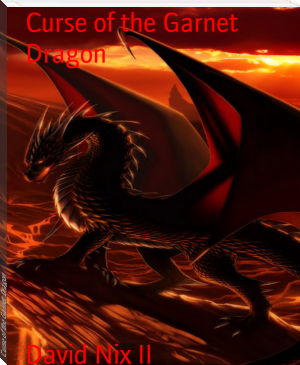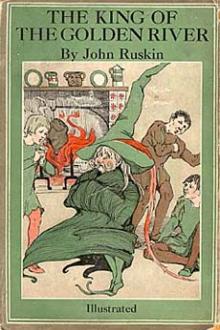Otto of the Silver Hand, Howard Pyle [good books to read for beginners TXT] 📗

- Author: Howard Pyle
Book online «Otto of the Silver Hand, Howard Pyle [good books to read for beginners TXT] 📗». Author Howard Pyle
CONTENTS
FOREWORD.
I. The Dragon’s House.
II. How the Baron went Forth to Shear.
III. How the Baron came Home Shorn.
IV. The White Cross on the Hill.
V. How Otto Dwelt at St. Michaelsburg.
VI. How Otto Lived in the Dragon’s House.
VII. The Red Cock Crows on Drachenhausen.
VIII. In the House of the Dragon Scorner.
IX. How One-eyed Hans came to Trutz-Drachen.
X. How Hans Brought Terror to the Kitchen.
XI. How Otto was Saved.
XII. A Ride For Life.
XIII. How Baron Conrad Held the Bridge.
XIV. How Otto Saw the Great Emperor.
Afterword
Between the far away past history of the world, and that which lies near to us; in the time when the wisdom of the ancient times was dead and had passed away, and our own days of light had not yet come, there lay a great black gulf in human history, a gulf of ignorance, of superstition, of cruelty, and of wickedness.
That time we call the dark or middle ages.
Few records remain to us of that dreadful period in our world’s history, and we only know of it through broken and disjointed fragments that have been handed down to us through the generations.
Yet, though the world’s life then was so wicked and black, there yet remained a few good men and women here and there (mostly in peaceful and quiet monasteries, far from the thunder and the glare of the worlds bloody battle), who knew the right and the truth and lived according to what they knew; who preserved and tenderly cared for the truths that the dear Christ taught, and lived and died for in Palestine so long ago.
This tale that I am about to tell is of a little boy who lived and suffered in those dark middle ages; of how he saw both the good and the bad of men, and of how, by gentleness and love and not by strife and hatred, he came at last to stand above other men and to be looked up to by all. And should you follow the story to the end, I hope you may find it a pleasure, as I have done, to ramble through those dark ancient castles, to lie with little Otto and Brother John in the high belfry-tower, or to sit with them in the peaceful quiet of the sunny old monastery garden, for, of all the story, I love best those early peaceful years that little Otto spent in the dear old White Cross on the Hill.
Poor little Otto’s life was a stony and a thorny pathway, and it is well for all of us nowadays that we walk it in fancy and not in truth.
I. The Dragon’s House.
Up from the gray rocks, rising sheer and bold and bare, stood the walls and towers of Castle Drachenhausen. A great gate-way, with a heavy iron-pointed portcullis hanging suspended in the dim arch above, yawned blackly upon the bascule or falling drawbridge that spanned a chasm between the blank stone walls and the roadway that winding down the steep rocky slope to the little valley just beneath. There in the lap of the hills around stood the wretched straw-thatched huts of the peasants belonging to the castle—miserable serfs who, half timid, half fierce, tilled their poor patches of ground, wrenching from the hard soil barely enough to keep body and soul together. Among those vile hovels played the little children like foxes about their dens, their wild, fierce eyes peering out from under a mat of tangled yellow hair.
Beyond these squalid huts lay the rushing, foaming river, spanned by a high, rude, stone bridge where the road from the castle crossed it, and beyond the river stretched the great, black forest, within whose gloomy depths the savage wild beasts made their lair, and where in winter time the howling wolves coursed their flying prey across the moonlit snow and under the net-work of the black shadows from the naked boughs above.
The watchman in the cold, windy bartizan or watch-tower that clung to the gray walls above the castle gateway, looked from his narrow window, where the wind piped and hummed, across the tree-tops that rolled in endless billows of green, over hill and over valley to the blue and distant slope of the Keiserberg, where, on the mountain side, glimmered far away the walls of Castle Trutz-Drachen.
Within the massive stone walls through which the gaping gateway led, three great cheerless brick buildings, so forbidding that even the yellow sunlight could not light them into brightness, looked down, with row upon row of windows, upon three sides of the bleak, stone courtyard. Back of and above them clustered a jumble of other buildings, tower and turret, one high-peaked roof overtopping another.
The great house in the centre was the Baron’s Hall, the part to the left was called the Roderhausen; between the two stood a huge square pile, rising dizzily up into the clear air high above the rest—the great Melchior Tower.
At the top clustered a jumble of buildings hanging high aloft in the windy space a crooked wooden belfry, a tall, narrow watch-tower, and a rude wooden house that clung partly to the roof of the great tower and partly to the walls.
From the chimney of this crazy hut a thin thread of smoke would now and then rise into the air, for there were folk living far up in that empty, airy desert, and oftentimes wild, uncouth little children were seen playing on the edge of the dizzy height, or sitting with their bare legs hanging down over the sheer depths, as they gazed below at what was going on in the court-yard. There they sat, just as little children in the town might sit upon their father’s door-step; and as the sparrows might fly around the feet of the little town children, so the circling flocks of rooks and daws flew around the feet of these air-born creatures.
It was Schwartz Carl and his wife and little ones who lived far up there





Comments (0)